Hawa Mahal
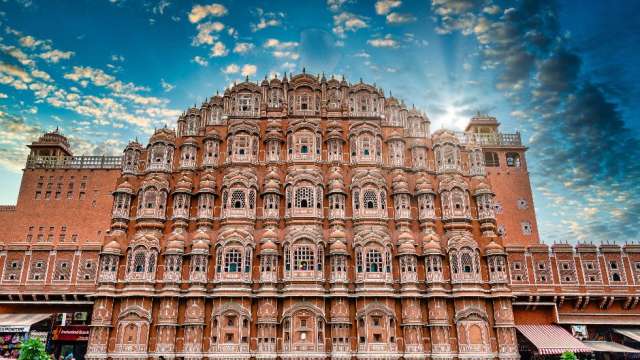
"The Palace of Winds" was built in 1799 by Maharaja Sawai Pratap Singh, the grandson of Maharaja Sawai Jai Singh, who was the founder of Jaipur.Its exterior is akin to honeycomb with its 953 small windows called Jharokhas decorated with intricate latticework.This architectural feature allows cool air from the Venturi effect to pass through, thus making the whole area more pleasant during the high temperatures in summer. It is considered as one of the most iconic attractions of the city.
Jantar Mantar
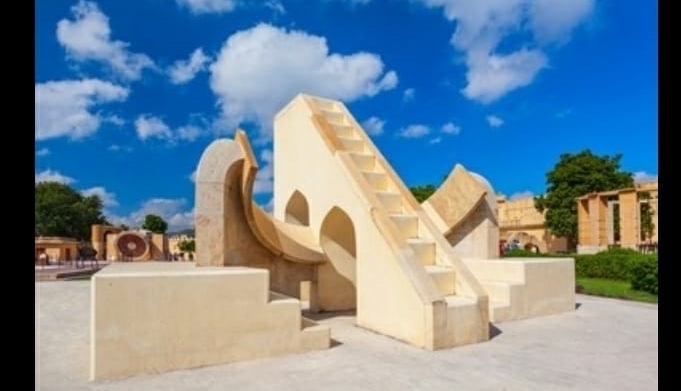
The Jantar Mantar, Jaipur is a collection of 19 astronomical instruments built by the Rajput king Sawai Jai Singh II, the founder of Jaipur, Rajasthan.The instruments allow the observation of astronomical positions with the naked eye.It has the biggest sundial in the world.The observatory consists of nineteen instruments for measuring time, predicting eclipses, tracking location of major stars as the earth orbits around the sun, ascertaining the declinations of planets, and determining the celestial altitudes and related ephemerides.If you're someone who likes to glance at the sky to find a tiny star that’s many light years away, and wants to know more about medieval astronomy, then Jantar Mantar in Jaipur is a must-visit for you.
Udaipur City Palace
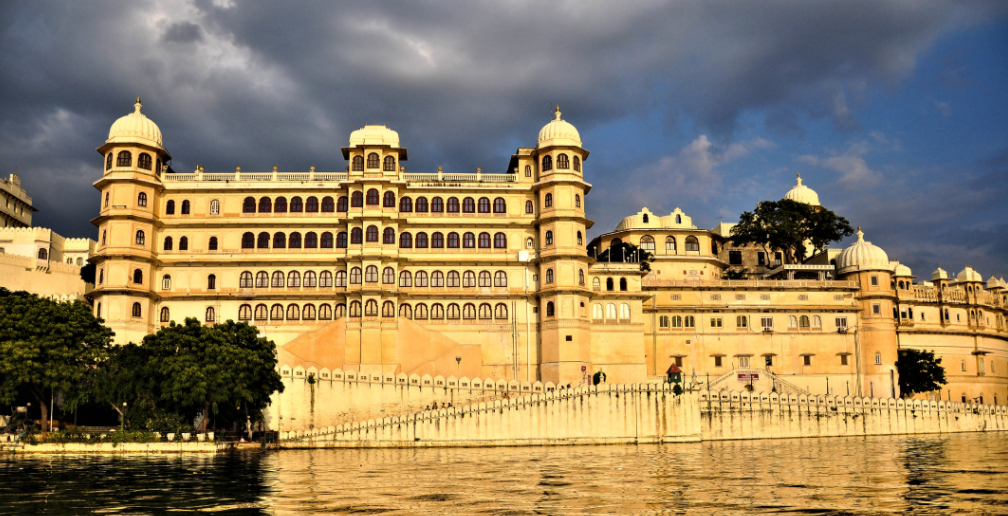
City Palace, Udaipur is a palace complex situated in the city of Udaipur.It was built over a period of nearly 400 years, with contributions from several rulers of the Mewar dynasty. Its construction began in 1553, started by Maharana Udai Singh II of the Sisodia Rajput family as he shifted his capital from the erstwhile Chittor to the newfound city of Udaipur.The palace is located on the east bank of Lake Pichola and has several palaces built within its complex.The palaces within the complex are interlinked through a number of chowks or quadrangles with zigzag corridors, planned in this fashion to avoid surprise attacks by enemies.The City Palace Museum has an unshakable place in the list of places to visit in Udaipur and if you are a history lover its the best place to know about Mewar heritage.
Amer Fort
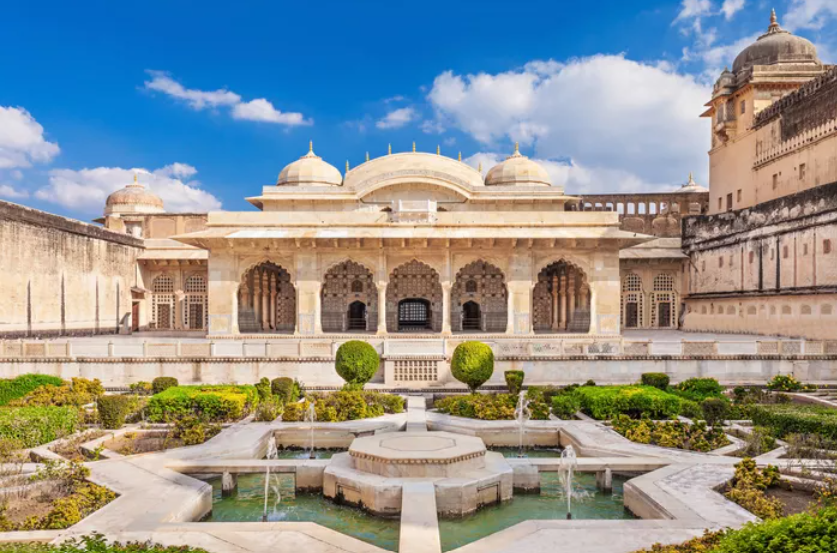
Amer Fort also called as Amber Fort is a fort located in Amer, about 4km from capital Jaipur in Rajasthan.The town of Amer and the Amber Fort were originally built by Raja Man Singh and additions were, later, made by Sawai Jai Singh. Located high on a hill, it is the principal tourist attraction in Jaipur.Amer Fort is known for its artistic style elements. With its large ramparts and series of gates and cobbled paths, the fort overlooks Maota Lake,which is the main source of water for the Amer Palace.The palace was the residence of the Rajput Maharajas and their families.. Amer Fort is also home to some underground tunnels that connect Amer to Jaigarh Fort.The essence of Amer Fort is encapsulated by the beautiful light and sound show within the fort, where visitors get to see an astounding spectacle about the history of the fort.Encompassing all this, the Amer Fort is a perfect example of Rajasthani architecture which is a must-visit.
Ranthambore National Park
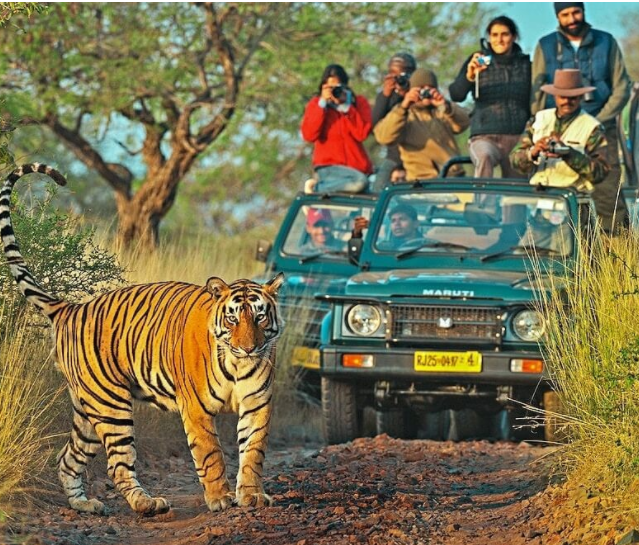
Ranthambore National Park is a national park in Rajasthan. It is bounded to the north by the Banas River and to the south by the Chambal River. It is named after the historic Ranthambore Fort, which lies within the park.Ranthambore is known for its large tiger population. Ranthambore National Park harbours dry deciduous forests and open grassy meadow. The flora of the park includes 539 species of flowering plants.Ranthambore National Park is a home to many wildlife animals such as Bengal tiger, Indian leopard, Indian elephant, Wild water buffalo, Gaur, nilgai, Barasingha, Black buck and many more.Once a private game reserve of the royal House of Jaipur, Ranthambore National Park and Tiger Reserve is one of the world’s best known wilderness areas and a must go for those who love nature and wildlife.
Mehrangarh Fort,Jodhpur
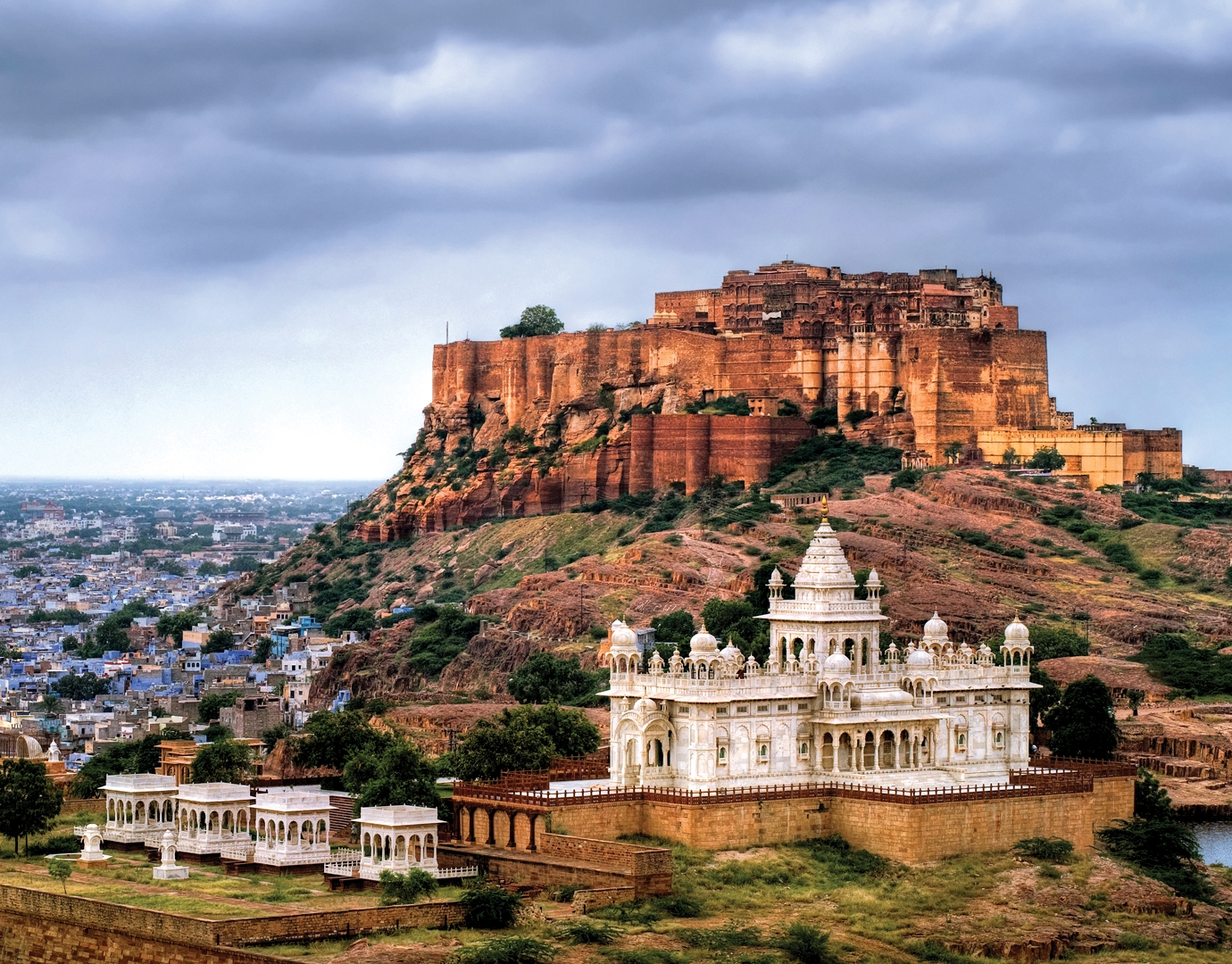
Mehrangarh Fort covers an area of 1,200 acres (486 hectares) in Jodhpur, Rajasthan. The complex is located on a hilltop around 122 metres above the surrounding plain and was constructed circa 1459 by Rajput ruler Rao Jodha. Inside its boundaries there are several palaces known for their intricate carvings and expansive courtyards, as well as a museum housing various relics. A winding road leads to and from the city below. The imprints of the impact of cannonballs fired by attacking armies of Jaipur can still be seen on the second gate. To the left of the fort is the chhatri of Kirat Singh Soda, a soldier who fell on the spot defending Mehrangarh.Some of the notable festivals taking place here include the World Sacred Spirit Festival and Rajasthan International Folk Festival which attracts tourists from all across the globe.